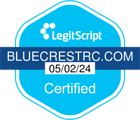The detection of Suboxone in drug screenings presents a nuanced challenge, primarily due to its composition of buprenorphine and naloxone. While buprenorphine is the primary agent sought in standard drug tests, naloxone typically goes undetected. This distinction is fundamental for both clinicians and patients, as the presence of buprenorphine can be a marker of compliance or misuse. Understanding how Suboxone is identified and confirmed through techniques such as gas chromatography-mass spectrometry raises important questions regarding its implications for treatment adherence and the broader context of drug monitoring. But what vital factors influence these detection processes? Studies have shown that standard immunoassays may not detect buprenorphine, highlighting the need for advanced techniques.
Understanding Suboxone
Suboxone, a medication-assisted treatment, plays an essential role in the management of opioid dependency by combining buprenorphine, a partial opioid agonist, and naloxone, an opioid antagonist. This combination leverages the benefits of both compounds to provide a balanced approach to treatment. Buprenorphine binds to the same receptors in the brain as opioids, reducing cravings and withdrawal symptoms without producing the intense euphoric effects associated with full agonists like heroin.
Naloxone, on the other hand, acts as a safeguard by discouraging misuse; if Suboxone is injected, naloxone becomes active, precipitating withdrawal symptoms. The benefits of Suboxone are substantial and include reducing the risk of overdose, lowering the potential for misuse, and facilitating a gradual tapering process for individuals seeking to cease opioid use. Despite these advantages, there are inherent risks, such as the potential for dependency on buprenorphine itself, respiratory depression, especially when combined with other depressants, or adverse reactions if improperly administered or used with other substances.
Drug Screen Basics
A thorough understanding of drug screens is essential for individuals entering alcohol or drug abuse programs, as these tests are a significant component of monitoring and supporting recovery. Drug testing serves as a crucial tool in determining compliance with treatment protocols and ensuring abstinence from substances that could hinder recovery progress. The scientific basis of drug testing involves detecting specific metabolites or parent compounds of drugs in biological samples such as urine, blood, saliva, or hair.
In substance abuse programs, drug screens are strategically employed to identify the presence of illicit or prescribed substances. These tests utilize immunoassay techniques for initial screening due to their rapid results and cost-effectiveness. Positive results typically necessitate confirmation through more specific methods like gas chromatography-mass spectrometry (GC-MS), which offer higher accuracy and specificity. Understanding the pharmacokinetics and detection windows of various substances is essential for interpreting results, considering factors like metabolism, dosage, frequency of use, and individual physiology that can affect detection duration.
Detection of Suboxone
The detection of Suboxone in drug screens is a nuanced process requiring an understanding of its composition and pharmacokinetics. Suboxone, consisting of buprenorphine and naloxone, is primarily detectable through buprenorphine, as naloxone is usually not screened due to its rapid metabolism. Detection methods involve immunoassay screening and confirmatory tests like gas chromatography-mass spectrometry (GC-MS) or liquid chromatography-tandem mass spectrometry (LC-MS/MS), offering high specificity and sensitivity to ensure accurate identification of buprenorphine and its metabolites. Research has indicated varying patient characteristics can influence the use of urine drug tests for buprenorphine.
Immunoassays may yield false negatives due to cross-reactivity issues, necessitating confirmatory tests for reliability. The screening timeframe is critical since buprenorphine has a half-life of approximately 24 to 42 hours, remaining detectable in urine for up to 7 to 10 days post-ingestion, depending on metabolic rates, dosage, and frequency. Hair tests, less common, detect buprenorphine for several months, offering a more extended window. Understanding these parameters is essential for accurately interpreting drug screen outcomes.
Implications for Treatment Programs
Understanding Suboxone detection implications in drug screens is vital for optimizing opioid addiction treatment programs. Suboxone, a combination of buprenorphine and naloxone, is crucial in pharmacological treatments available for recovery. Its detection in drug screens plays a central role in ensuring adherence to prescribed regimens and monitoring progress. Treatment programs must consider Suboxone’s unique pharmacodynamics in personalized recovery plans. Unlike full agonists, its partial agonist profile reduces cravings and withdrawal without euphoria.
Detecting Suboxone through drug screens helps clinicians assess compliance and adjust strategies to ensure progression on the intended recovery trajectory. Understanding its interaction with other substances is key in integrated treatment designs. Drug screens yield essential data on concurrent substance use, enabling real-time therapeutic approach modifications. This strategy supports addressing polysubstance abuse and enhances treatment efficacy, offering a structured path towards sustainable recovery from opioid addiction. For comprehensive treatment solutions, consider options like an intensive outpatient program or luxury rehab centers.

Final Thoughts
Suboxone, primarily detected as buprenorphine on drug screens, undergoes initial immunoassay testing with confirmation via advanced methods like gas chromatography-mass spectrometry. With a half-life of 24 to 42 hours, buprenorphine remains detectable in urine for 7 to 10 days and persists in hair samples for several months. These detection windows are essential for monitoring adherence in treatment programs, underscoring the significance of precise testing and interpretation in managing opioid dependence effectively.
If you or a loved one is struggling with addiction, remember that you don’t have to navigate this journey alone. At BlueCrest Recovery, we’re here to provide the support and resources needed to help you move from a place of powerlessness to one of strength and healing. Don’t hesitate to reach out to our team online or call us today. Let us walk with you on your journey to recovery. Follow us on Facebook for ongoing insights, encouragement, and support.
Frequently Asked Questions
Can Suboxone Affect the Results of a Workplace Drug Test?
Suboxone, used in addiction treatment, may have implications for workplace drug testing. While standard tests typically do not screen for Suboxone, specific tests can detect it. Employers should establish clear Suboxone policies to address potential implications. Employees in treatment should communicate with employers about Suboxone use, ensuring transparency and understanding of its potential effects on drug testing outcomes and workplace safety protocols.
How Long Does Suboxone Stay Detectable in the Body?
The duration Suboxone remains detectable varies based on detection methods and metabolic factors. Typically, it is detectable in urine for 3-7 days, blood tests identify it for about 2-3 days, while saliva tests for 1-4 days. Individual metabolic rates, dosage, and frequency significantly influence how long it is traceable.
Will Taking Suboxone Cause a False Positive for Other Substances?
The potential for Suboxone to cause false positives is generally low, as it is primarily detected through its metabolites, like norbuprenorphine. The specificity of the test plays a crucial role. Standard drug panels don’t usually screen for buprenorphine, Suboxone’s primary component, requiring targeted testing to detect Suboxone, minimizing its interactions with other substance tests.
Does Suboxone Require a Specific Type of Drug Test for Detection?
Suboxone testing methods require specialized drug tests, as standard panels may not detect it efficiently. Detection necessitates tests specifically targeting buprenorphine and naloxone, typically in extended opioid panels. Detection limits depend on test sensitivity, with buprenorphine detectable for up to seven days post-ingestion. Accurate identification ensures appropriate monitoring and management in clinical settings, particularly for substance abuse recovery programs.
How Should I Prepare for a Drug Screen if I’m on Suboxone Treatment?
To prepare for a drug screen while on Suboxone treatment, adhere strictly to prescribed dosages and treatment guidelines. Inform the testing facility about your treatment for accurate result interpretation. Consistent communication with your healthcare provider can help manage your treatment, confirming compliance, and addressing any discrepancies during the screening process.


















